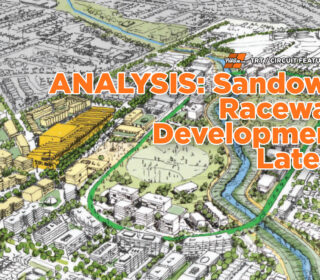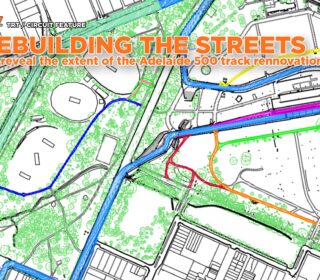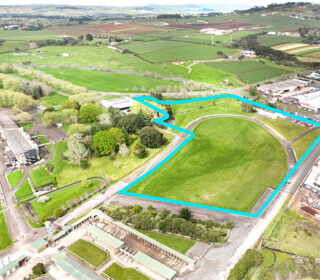Sandown: Birthplace of Australian Motorsport
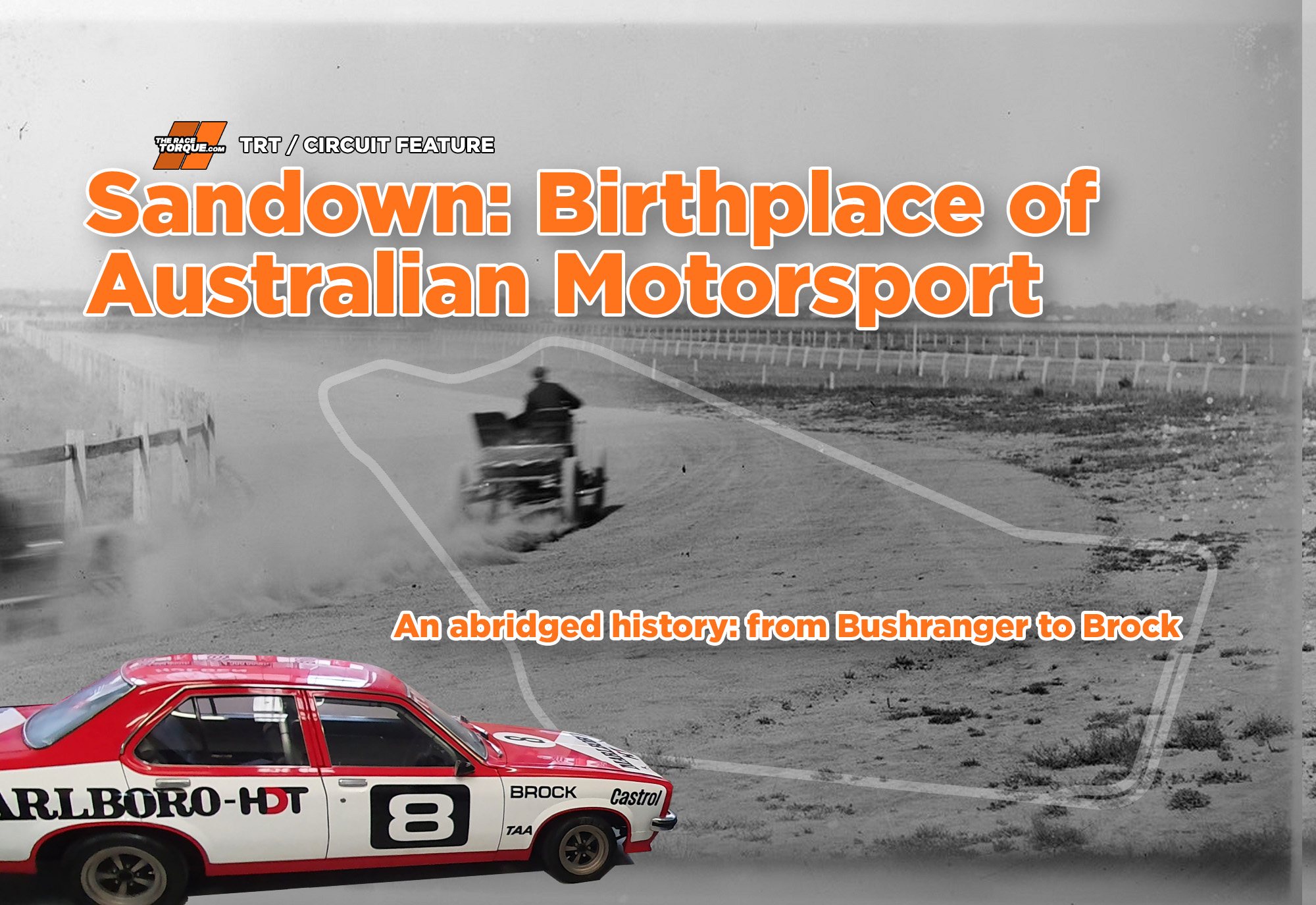
An abridged history: from Bushranger to Brock
In modern times Sandown has become known as the home of Supercars’ retro round, but the venue can claim to a milestone that pre-dates the entirety of touring car racing: Sandown hosted Australia’s first ever car race.
Through multiple generations, both in terms of venue configuration and genre of motorsports that have participated on its famed layouts, the suburban Melbourne track has been witness to many of the sport’s key moments, starting at day one.
The passage of 118 years has given way to some debate about the origin of our first meet, however, the excellent National Library of Australia’s newspaper archive from across the country leaves little doubt: March 12th, 1904, was the genesis of competitive car racing in this country.
For some, the very definition of what constituted a race is an issue, and adding to the historical confusion, many newspapers of the day reported on motoring matters in their dedicated bicycle columns!
Regardless of anything, on that Autumn Saturday just after the turn of the 20th century, the wheels were set in motion for the brilliant Sandown story and the growth of motorsport in this country.
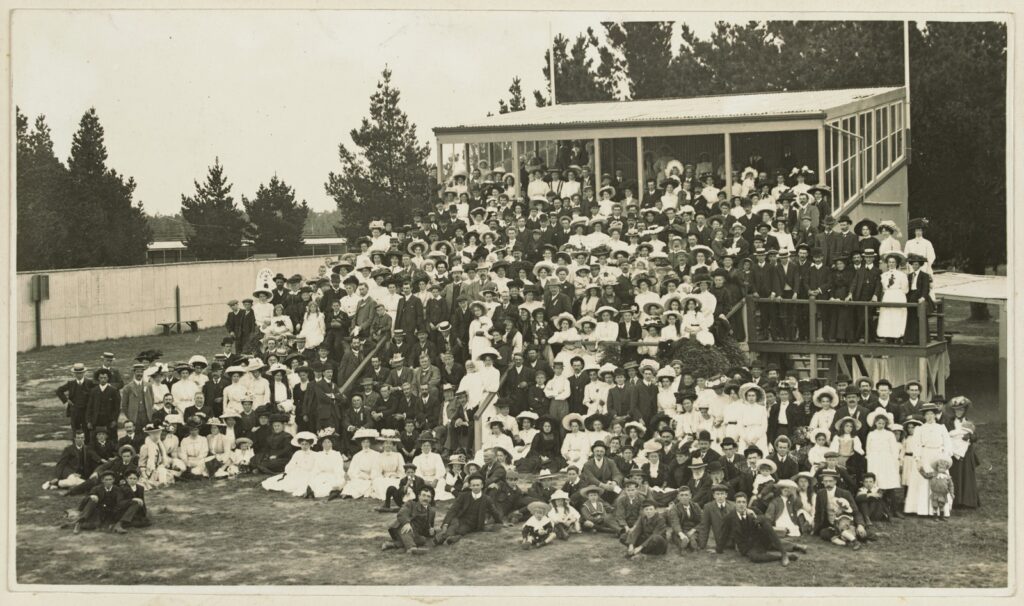
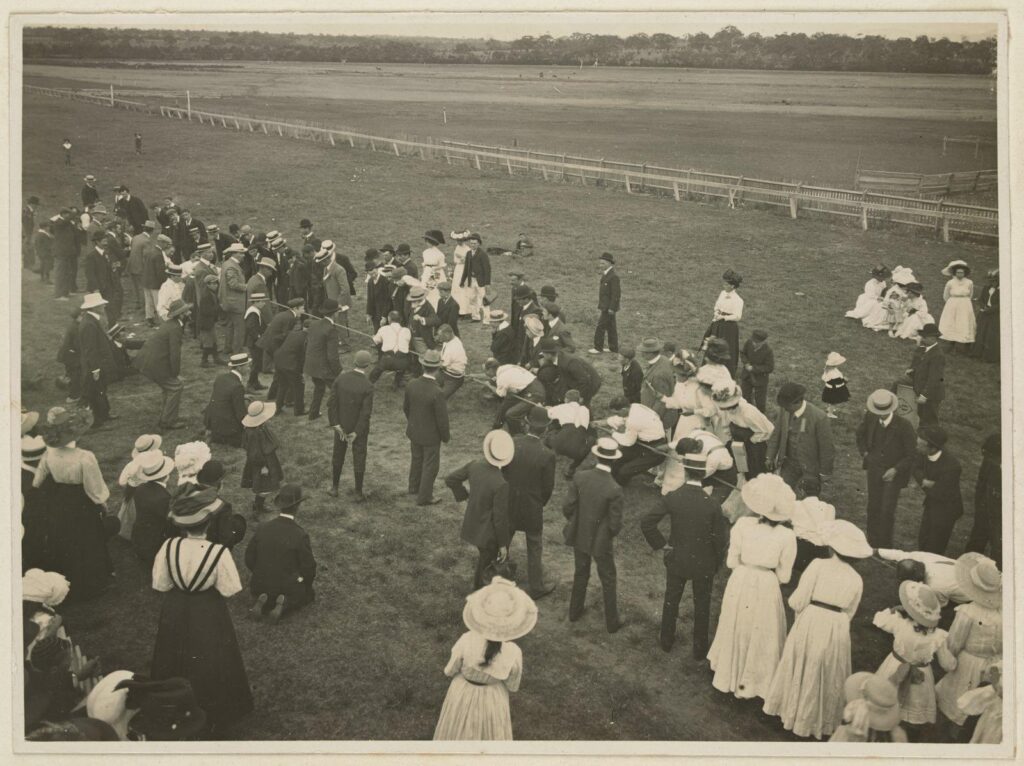
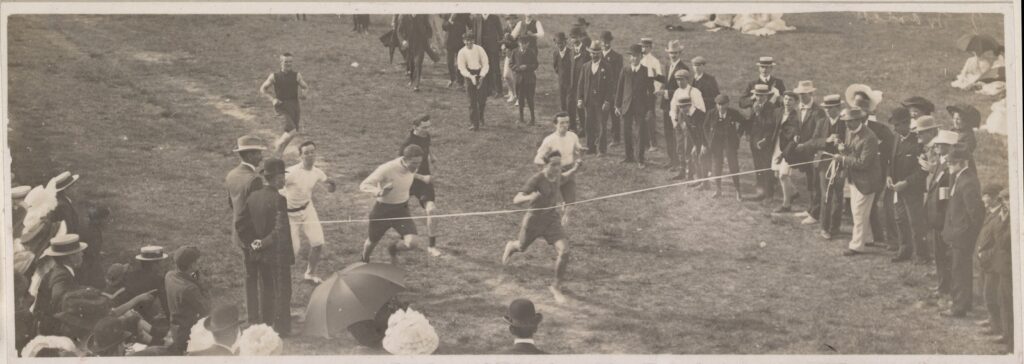
“This new sport has a big future before it”
Sandown Park Racecourse started life in 1888 as the privately owned Oakleigh Park Racecourse, before changing hands in 1891, and taking on its current title, in tribute to the famed British venue, which ultimately lent its name to the local area.
That original track was smaller than the current iteration and located more towards the train station, or the raceway’s current first turn.
And that station would prove key, with the venue accessible by the Oakleigh to Gippsland railway that had opened in 1877, which for the first race meet saw three different trains chartered from the city and Dandenong.
For that event, there was plenty of interest drummed up in the Melbourne press during the lead-up, while a trial run on the 2nd of March proved that the track surface was safe, with many of the cars in fact turning out to be faster than horses – seemingly a surprise to some!
The occasion of day one was the annual picnic of the Commercial Travellers Association, which invited the Automobile Club of Victoria (ACV) to organise three races for cars and bikes to be held on the horse track.
The ACV was involved in all things motoring, while in 1916, King George V approved the Royal prefix, leading to today’s RACV.
The picnic was a significant outing, with tea and cake, a luncheon, amusements, free toys and sweets for kids, a merry-go-round, performing dogs and monkeys, gymnasts and tumblers, running races, a brass band, plus a variety of other shows and games for kids.
There were also “mirth-provoking contests” that involved men whistling tunes to their lady friends, who had to guess the song, with one newspaper reporting more on this aspect than the historic first race. Modern promoters have genuinely lost their way…
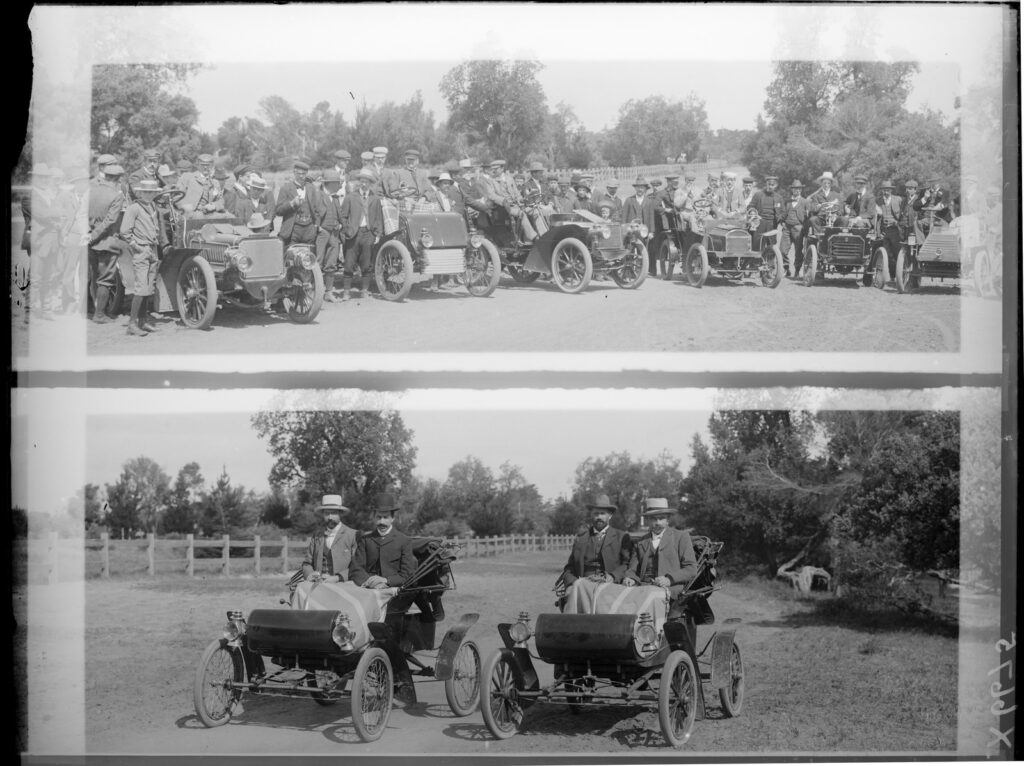
With over 1,400 people in attendance, the automotive portion of proceedings started with a convoy of over 25 cars making the arduous crawl along 25km of dirt roads from Alexandra Parade, South Yarra, with the machines leaving at one-minute intervals to limit dust along St Kilda and Dandenong Roads.
The number of cars grew to 60 throughout the day, joined by other motorcycles.
It took some 10 years after the first race in Paris, France, for motorsport to reach Australian shores, although when you consider that there were only 300 cars in the state of Victoria at the time, a reasonable percentage of those available were in attendance at Sandown that day.
The first ever race was for cars up to 6hp over a 2.4km distance, which was won by the 4.5hp Locomobile steam-powered car of James Robert Crooke, claiming victory from the handicap format with a 500-yard head start in a time of 3min55.5sec, beating home eight other competitors. The race attracted seven entries that did not start.
Of note, Crooke owned the Aspendale Racecourse in bayside Melbourne, a horse racing venue like Sandown, which had earlier hosted a car rally in January 1904.
By 1906, Aspendale featured the world’s first dedicated, purpose-built motorsport circuit, which was built on the inside of its pear-shaped horse track, with the 1.6km configuration morphing through several surfaces through to the late 1940s.
As widely reported at the time, Crooke talked of his plans to build the race circuit when he was awarded with the club badge for his Sandown success at the ACV’s subsequent “Smoke Social”.
Adding to the family’s legacy, Crooke’s father, James, was the owner of the very first Melbourne Cup winner, Belzone in 1849, while his great-grandson Jon Crooke was the 1986 Australian F2 champion, and a part of the ‘87 HDT Bathurst squad. He would later set up Hyper Stimulator, a company that kicked off a worldwide industry.
J.R. Crooke’s early years were wild – for a time he rode with infamous bushranger Captain Moonlite. While Crooke turned to legitimate horse training, trading and being a jockey, Moonlite would ultimately be hung at Darlinghurst Gaol.
There will be more on that story another time…
The second race of the day was over a distance of 2.4km for roadster motorcycles, and it was reportedly one of the highlights of the event, with speeds topping 50km/h.
Charles Mayman won that race on his Beauchamp, which was built in a workshop off downtown Chapel Street in Prahran.
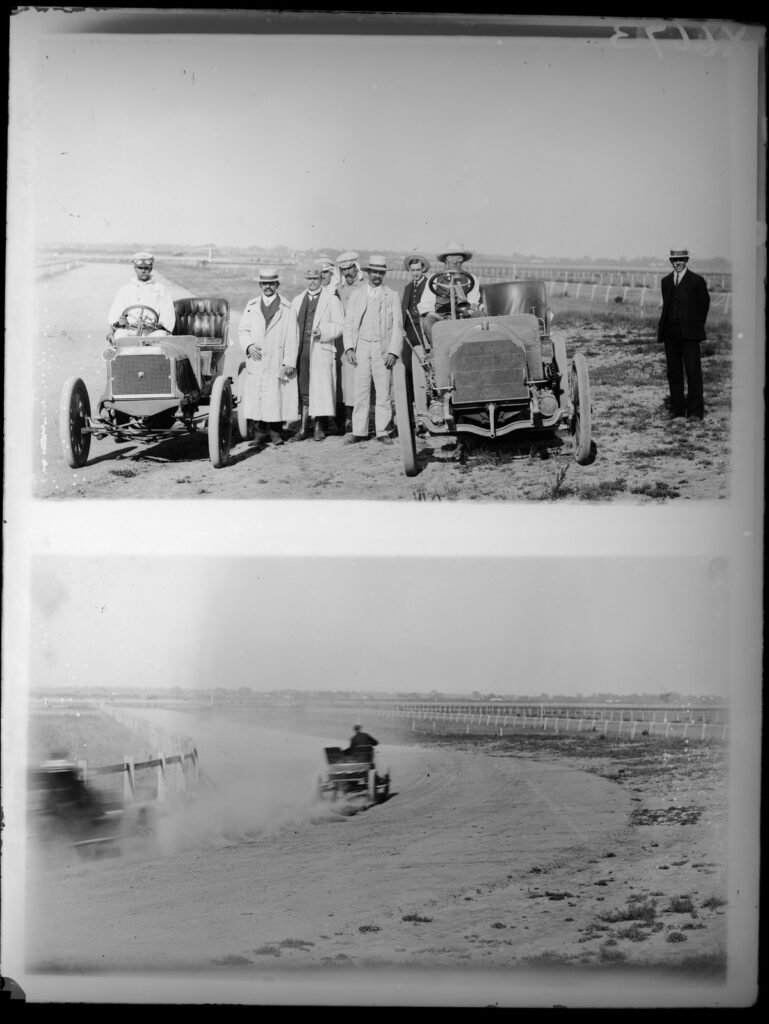
Rounding out the competition was the heavy car race, which was taken out by Colonel Harley Tarrant at an average speed of 42km/h in his 10hp Argyll.
One of the key machines of interest on the day was an all-electric car, as driven by a pair of ladies, with the display reportedly a great demonstration of how easy it was to command an automobile!
A report in the Australasian newspaper noted:
“It may now be confidently stated that automobilism has caught on, and it will be found that with such persistent and preserving advocates as women folk can be when they desire anything, their gentlemen friends will capitulate and procure cars.”
While this statement is awkwardly true today, modern reporting on such matters has probably changed tone for the better.
The picnic was capped off with the cars in attendance lapping the track in a specially marked out course through various pegged out flags, “With a view of familiarising the public with motor cars,” as “Great fun was caused by the anxiety of the ladies to endeavour to get a seat on the cars for a drive around the course.”
Meanwhile, spare petrol was provided at the venue free of charge if required.
The next meet on these shores was held closer to downtown Melbourne on a 1,728m long course at the Maribyrnong Racecourse on the 30th of April, which further set the wheels in motion for the sport to grow.
A total of 3,000 attendees at that meet witnessed car, motorcycle and other innovative races in what was dubbed the Maribyrnong Gymkhana.
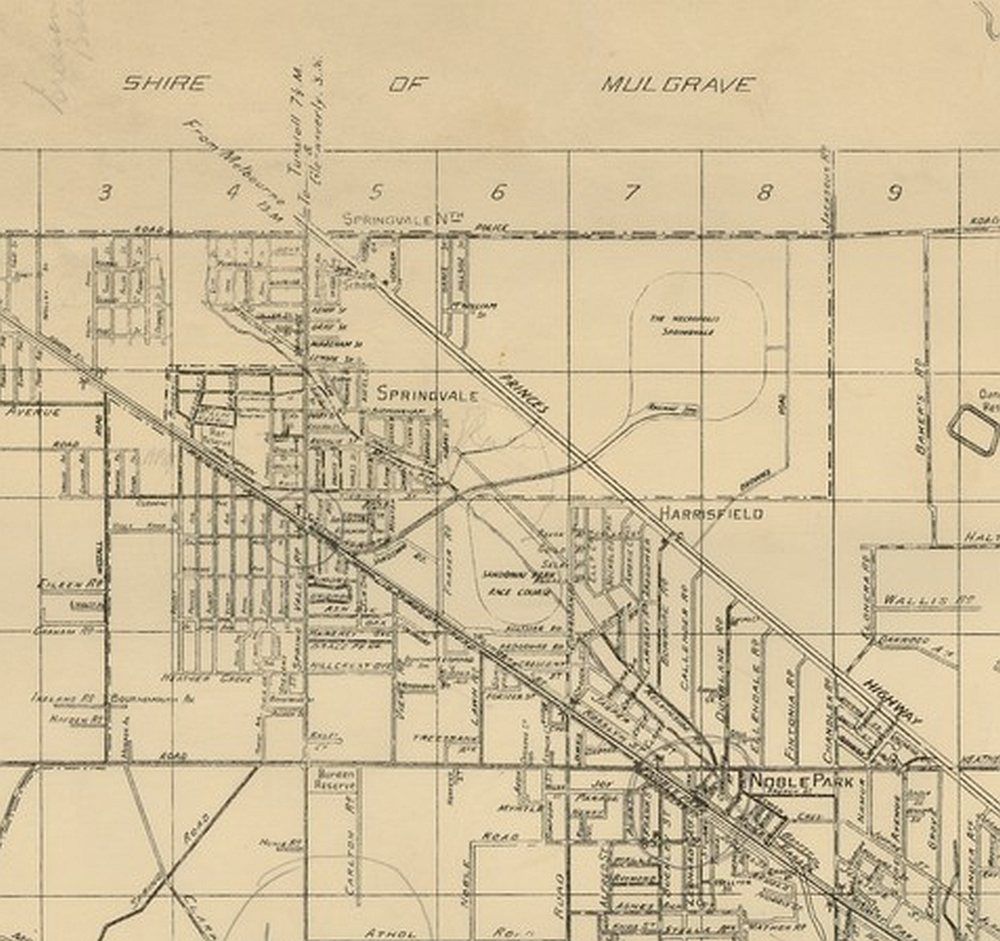
Sandown II
With a proliferation of horse racecourses spread throughout greater Melbourne, rationalisation in 1931 saw Sandown as one of the venues shuttered, with the vacant land reportedly then used for grazing and military training.
During 1950, the Springvale Cemetery Railway line, which crossed over the future north end of the facility was officially closed, with the last of its mortuary services having run in 1943.
In the following decades, the grounds essentially resorted to swamp, however, with further mergers of local racing clubs, the current custodians, the VATC, (which later became the Melbourne Racing Club, the MRC, in 2002), drew up plans to build a new home in Springvale.
And build homes it did, in a manner which is sadly a likely outcome for the current-day facility – the Victorian Places website states the VATC developed Sandown Park Estate, consisting of 573 house blocks, with the funds being tipped into the reborn venture.
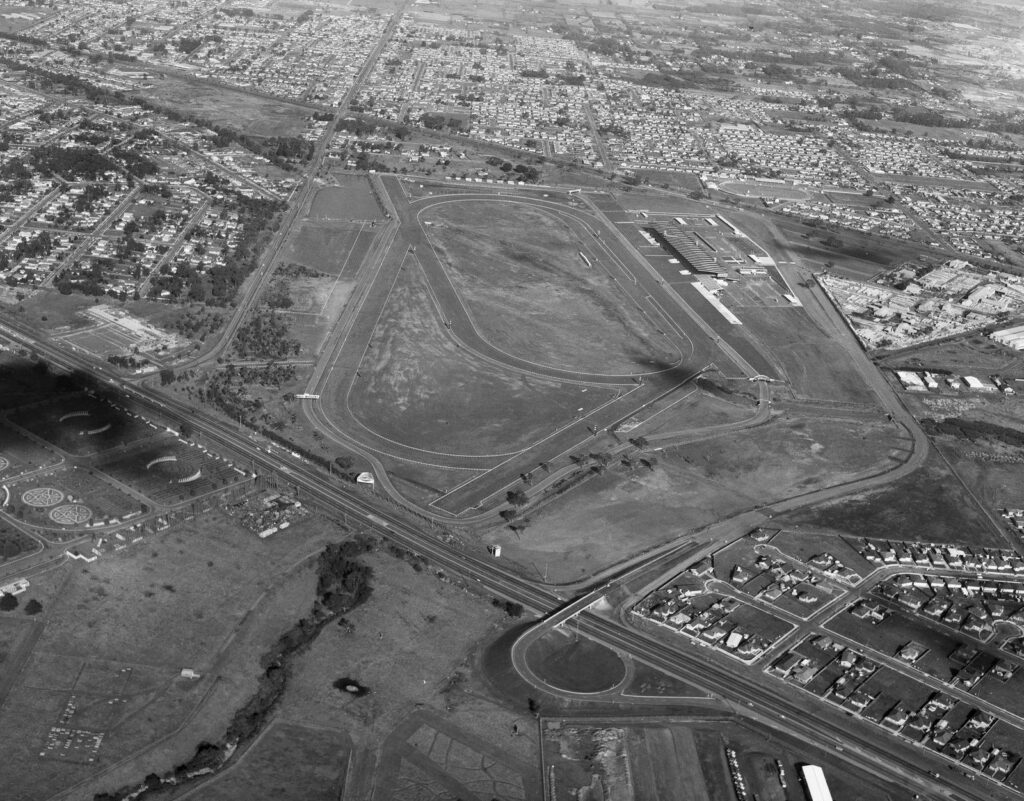
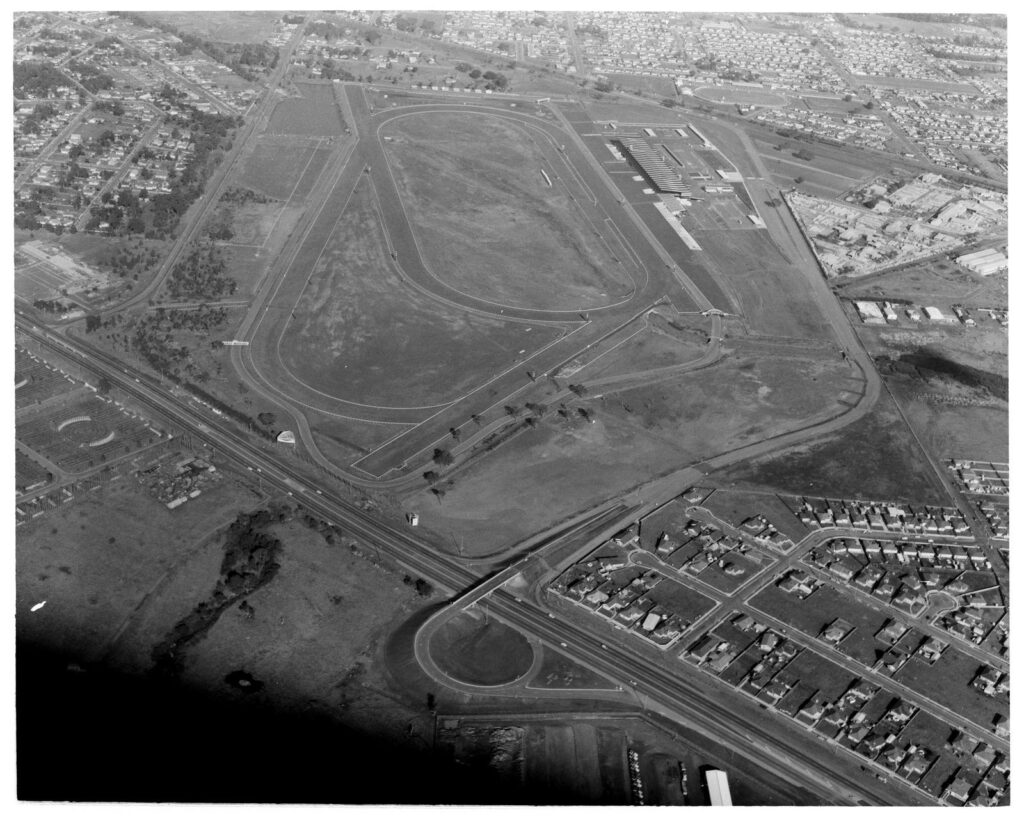
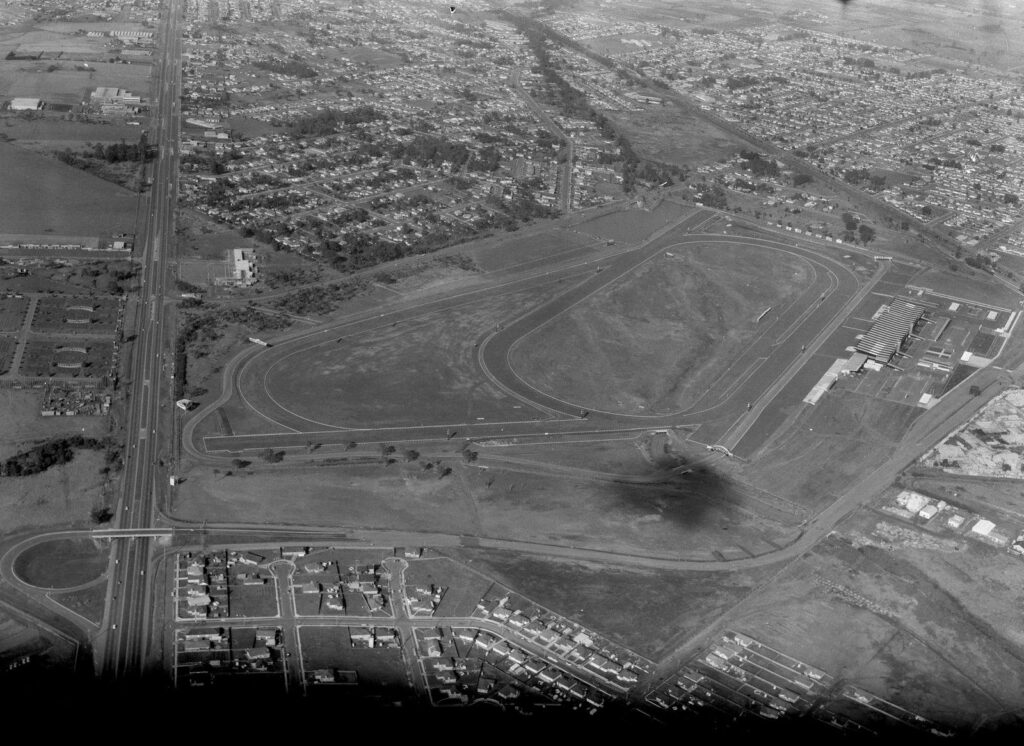
By 1958, the horse track had been set out and the dam constructed behind the current fourth turn of the raceway, while in 1959 it was announced £700,000 would be spent on the grandstand.
Horses however were beaten to the starting line by race cars, with the circuit opening on the 11th of March 1962. A crowd of 10,000 attended the first meet, which featured luminaries such as Jack Brabham, Stirling Moss, John Surtees, Bruce McLaren and Jim Clark.
The concept of motorsport horsepower and animal horsepower wasn’t original – the Aintree Circuit in England combined the pair dating back to 1954, and closer to home, Warwick Farm Raceway opened in 1960.
The VATC utilised many design cues from various facilities around the world to formulate the layout and amenities at Sandown, which although showing signs of age, continue to be standard setting to this day.
Horse racing made a return in June 1965 with 52,000 punters trackside for that re-opening meet, including the now completed grandstand, with the interior fit out and roof coverings finished off.
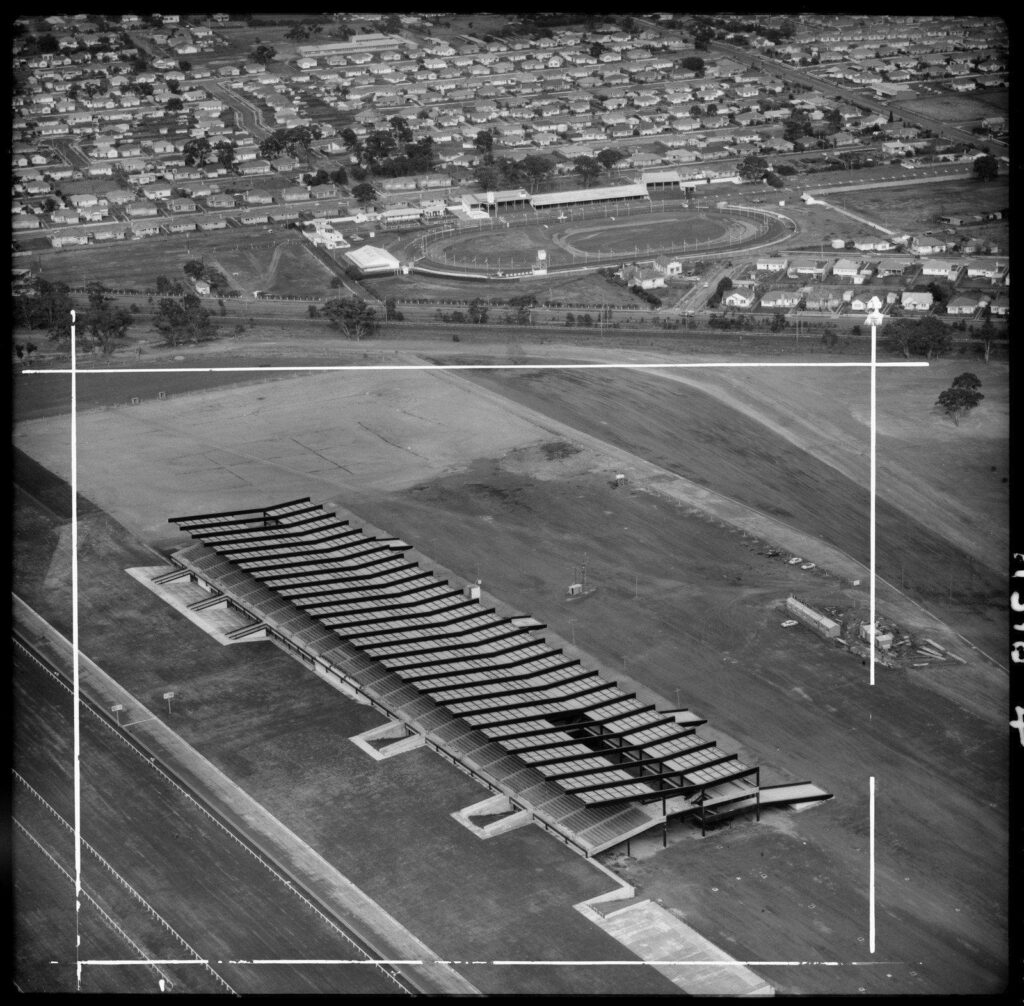
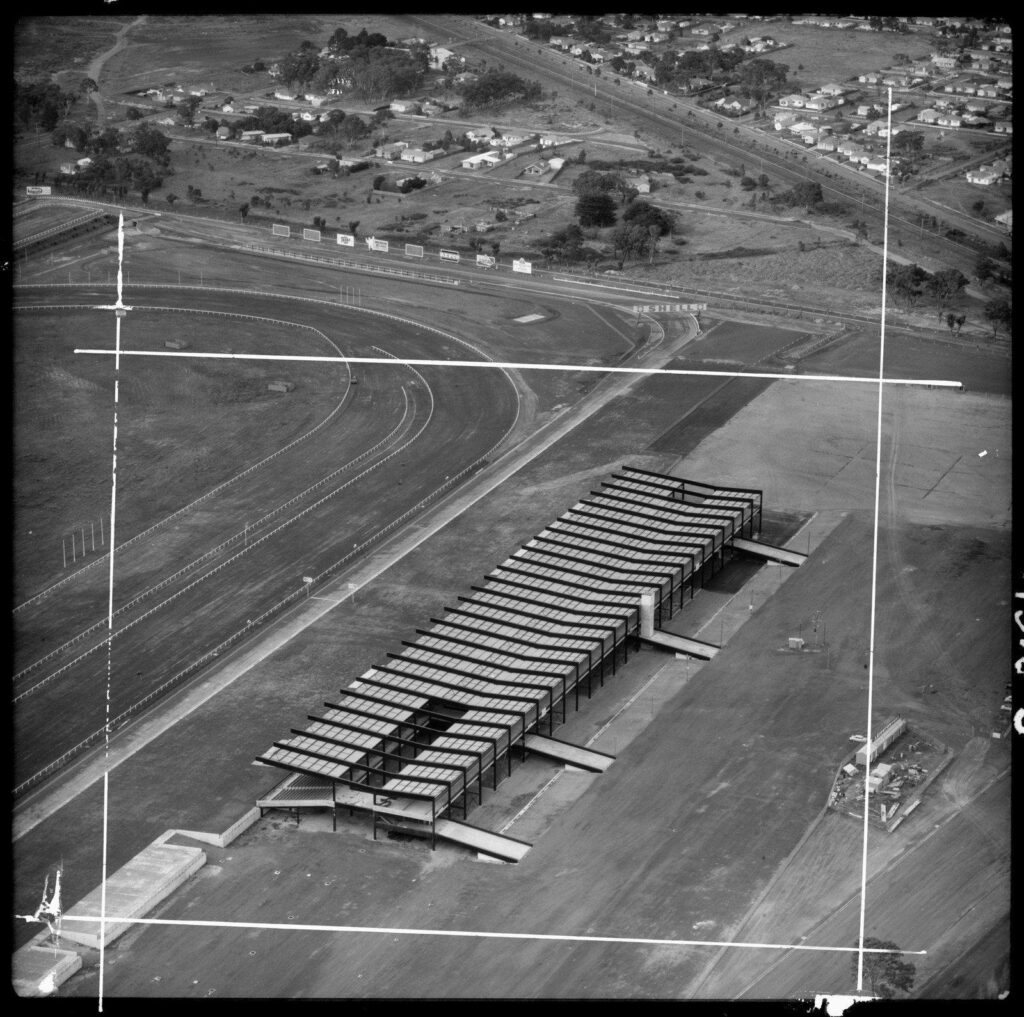
And that grandstand is a key feature of the charm of the venue to this day, and possibly the best vantage point in Australian motorsport, especially for race starts.
The late-modernist design was produced by Bogle & Banfield, with engineering provided by Johnston & Partners. Its original 250m configuration featured 27 bays, which was extended towards the north in 1976, with its final length coming in at 300m.
That addition includes the function areas now used for corporate guests overlooking the track, plus downstairs areas used for officials’ briefings and the media at Supercars rounds.
Further works were carried out in 1994, including renovations to the entrance at bays 13-15, with the member’s enclosure renovated and shelter over the betting ring added in 1997.
On the 4th of April 2019, the Heritage Council Victoria recognised that the significance of the structure warranted its inclusion in the Victorian Heritage Register.
While this ensures the preservation of the building, you have to look no further than the nearby Waverley Park for the possibilities for Sandown, which has seen 1,400 houses constructed around its listed grandstand, which has been redeveloped into a commercial centre.
1984
With roots dating back to 1924, the Light Car Club of Australia (LCCA) was a mainstay of the local motorsport scene and was behind key projects such as the first Australian Grand Prix at Phillip Island in 1928, the formation of the Rob Roy Hillclimb, the 1950s races at Albert Park, plus it instigated the Armstrong 500 at Phillip Island in 1960, amongst many events covering a broad spectrum of the sport.
It was truly an innovator.
After several prominent members were associated with the development of Sandown, the LCCA took over the lease of the motorsport facility in 1966, and brought with it big events, which grew a significant following.
Approaching the mid-1980s, the LCCA was looking to take the next step, and it received funding to bring Sandown up to modern Formula 1 standards.
Circuit infrastructure was one issue, track distance another, with an infield loop added at the peak of the Rise, and the top and bottom sections of the layout altered in the name of safety, while also drawing the lap distance out to 3.9km.
The pits were also moved from the cramped bog at the southern end of the track to its current position, at a reported cost of $600,000.
Sadly, further state government support for the endeavour failed to materialise, F1 went to South Australia, leaving the LCCA to pick up the pieces with a round of the World Endurance Championship.
The Victorian Auditor-General’s report from 1984-85 paints a sad story behind the finances of the renovations and event.
With Commonwealth funding of $2,894,680 provided to bring Sandown up to international spec, any cost overruns were to be financed by the LCCA, however, this wasn’t seen to be a problem, with profits from the sportscar round set to be used to meet obligations.
However, a low attendance, a lack of sponsorship, the track breaking up under the strain of the Group C beasts, and issues with the TV broadcast resulted in a loss of $329,000, which necessitated state government support to the tune of $706,000.
The World Sports Car Championship returned for a second event in 1988, with the financial losses following that event said to have contributed to the demise of the LCCA.
The International layout was essentially abandoned in 1989, except for use by motorcycles – it would be hard to find someone who didn’t love the fact that Big, Bad, Sandown was back, with Jon Davison taking over the promotional reigns of the venue in 1990.
From a thoroughbred perspective, the venue played a key role in the Spring Racing Carnivals from 1997 as the home base to the international entries for the Melbourne Cup, who acclimatised at specially set up quarantine facilities within the venue.
The International Circuit became a memory in 2001 when the MRC carried out major renovations on the horse tracks, essentially building a second ‘Hillside Track’, which crossed the unloved twisty bitumen ribbon, with other horse track renovations forcing a realignment to the car racing circuit’s northern end.
The MRC took charge of the motorsport aspects of the venue in 2007.
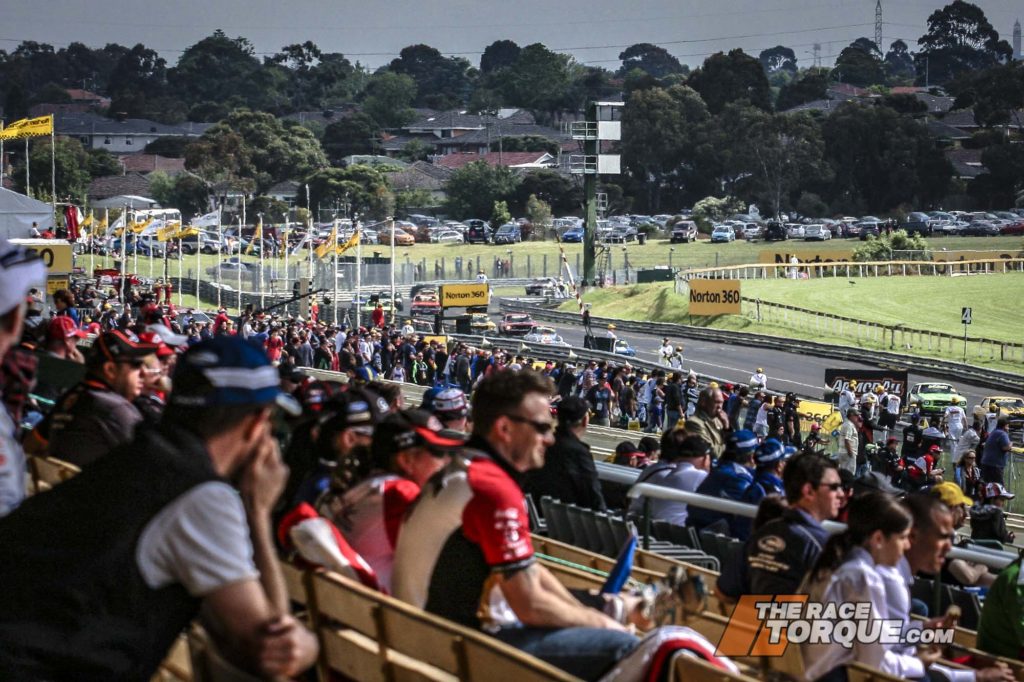
The Sandown heritage
The early years at Sandown saw the venue attract big names from around the world, whether it was for the Sandown International Cup, the Tasman Series, the Gold Star or the Australian Grand Prix, which was contested at the venue six times between 1964 and ’78, with victors including Brabham, Clark, Graham McRae and John Goss.
A highlight from those events was in 1978 when Juan Manuel Fangio made an appearance aboard a famed Mercedes-Benz W196, who engaged in a match race with Brabham aboard his BT19.
All of the greats raced at Sandown, including Phil Hill, Graham Hill, Denny Hulme, Jackie Stewart, Jochen Rindt, and Chris Amon to name a few.
Sandown has been the host to more ATCC/Supercars events than any other circuit and was also the home to the pre-Bathurst warm-up enduro, which had a lineage dating back to the 6 Hour in 1964, and subsequently ran as the Three Hour, 250, 400 and 500.
While Peter Brock may have been the King of the Mountain, he was also supreme at Sandown: on nine occasions he won the Sandown enduro, including a string of seven straight successes from 1975.



